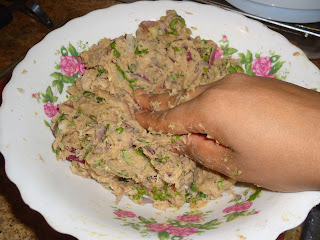SHAMANIC CULTURE
I went to the American Museum of Natural History and i saw the cultural Hall which embody African peoples, Asian peoples, Eastern Woodlands and Plains Indians, Maxico and Central America, Pacific and American peoples. I saw some Shamanic cultures with difference on the primary theme of death and rebirth that is found all fabulous tradition.Iwant to underline the Shamanic culture of Asia and much of Eastern and Central Asian. Shamanic is the idea that certain individuals, by going into a tempory state of trance, can communicate with the supernatural.
The turning point of powerful illness can be the central experience of the Shaman's beginning. It includes an oppose with forces that impair and demolish. The Shaman not only survives the ordeal of a debilitating sickness or accident but is healed in the process. Illness thus becomes the vehicle to a higher plane of consciousness. The evolution from a state of psychic and physical disintegration to Shamanizing is effected through the experience of self-cure. The Shaman is only the healer who has healed himself or herself; and as a healed healer, only he or she can truly know the territory of disease and death. They heal illness. They gain knowledge and insight from working with the spirits of nature, and thay gain knowledge with spirits of humans such as their ancestors. This art shows some believe illness to be caused by an evil spirit who has stolen the sick person's soul. The Shaman calls in to recover the soul of the sick woman (on the bench at left) and uses a characteristic technipue, the rhythmic drum- beating that induces trance. In trance he persues and fughts the evil spirit. Lest it seizes him and carries him away, his assistant holds him by a chain. Victorious, the Shaman takes back the woman's soul and restores it to her body. Then she recovers. The typical Shaman's dress with its symbolic metal ornaments, eash with special meaning, which sets him off from the group. The sick woman's mother stands at right, dressed in winter finery. Decorated bark panels at right walls are usually associated with summer houses.
The art maker plays an obscure situation in the society by the nature and supernatural power . For this reason, dreams are good or evil, helpful or injurious. The Shaman's practice is also charecterized by the soul fights. The shift of consciousness that the Shaman makes, which allows the free part of his or her soul to leave the body. During the soul flight the Shaman is both in the room, and going on the "journey" so that he or she has an awareness of both the same time. The Shaman sees illness as a lack of power because it was lost somewhere in their life. In order to heal he or she the Shaman returns their power. For thousands of years man has fought ill-luck in this way.
The Shaman also removes misplaced energy. The negative emotions you may feel, or the negative emotions that others can send at you seen by the Shaman to be stuck or stored in various parts of the body. This can be seen with the example such as how stress cause ulcers or back pains.
Survival in the Yakuts people of Eastern Siberia often precarious and Shamanism offers a means to control spirit forces that might bad luck to the hunter, to the reindeer herds or to the individual. For thousands of years man has fought ill-luck in this way.
For the Yakut, however, there is little conflict between indigenous beliefs in a world of spirot and the ability of Shamans to reach then, and the belief in the Christian God and saints and th ebility of priests to communicate with them. A Russian Orhodox icon on the black wall of this scene testifies to the Yakut conversion to Christianity. The Y akut and other Shamanistic peoples of Asia regard the world not simply as mute materuak surroundings but as a vital cetity classifiable by kinds of spirits, most of which need to be some how placated.
In conclusion, the scene was considered to be a practice of Shamanism. Men and women could be Shamans. The main duties of a Shaman were to cure sick people and prevent catastrophes.








